Art World
See 8 Intriguing Finds at This Year’s TEFAF New York, From a Greek Suit of Armor to an Ancient Bust Once Owned by Warhol
See highlights from the swanky Upper East Side-based art fair.
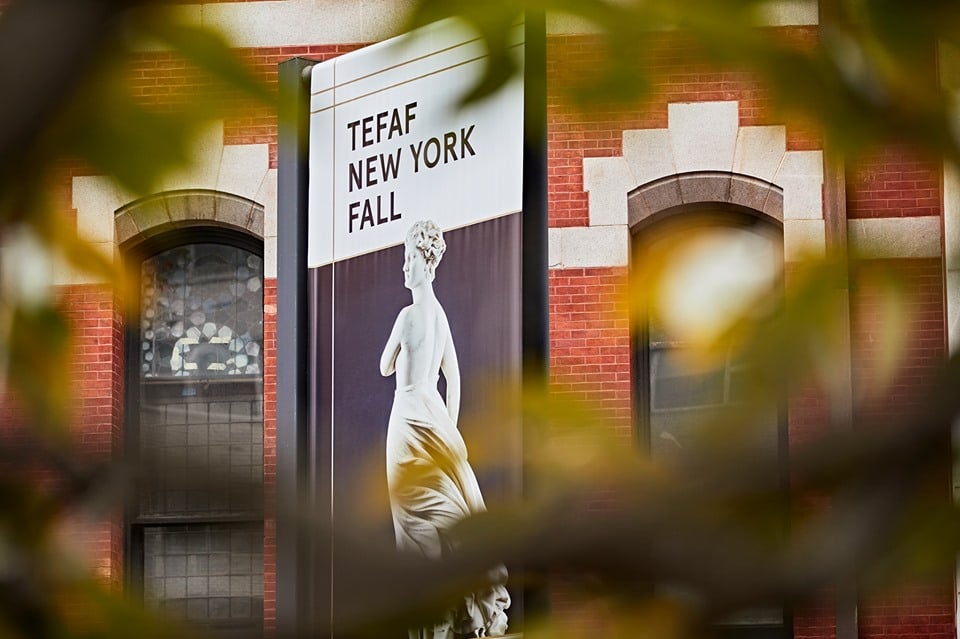
See highlights from the swanky Upper East Side-based art fair.

Eileen Kinsella &
Sarah Cascone &
Tim Schneider

The fall edition of the three-year old TEFAF New York fair, which is heavily focused on Old Masters and other historical works, opened its doors to VIPs at the Park Avenue Armory on New York’s Upper East Side yesterday. Perhaps owing to the fact that the preview coincided with Halloween, or that murmurs of a possible economic recession have been echoing through the art market of late, the opening night crowd seemed thinner and a bit more subdued than in years past.
However, the art and objects on view—ranging from antiquities to Old Masters, rare jewels, and modern art—were as high-caliber as ever. Another notable element new to this year’s fair was seven booth-share collaborations on the second floor, where antiquities dealers blended their wares with modern and contemporary art. These included London’s Charles Ede, whose ancient busts sat alongside contemporary offerings from Sean Kelly Gallery, such as a photograph of Marina Abramovic’s face plastered with gold.
Artnet News scoured the multitude of offerings to pluck out some of the rarest and most intriguing objects at this year’s fair. Here are our top picks.
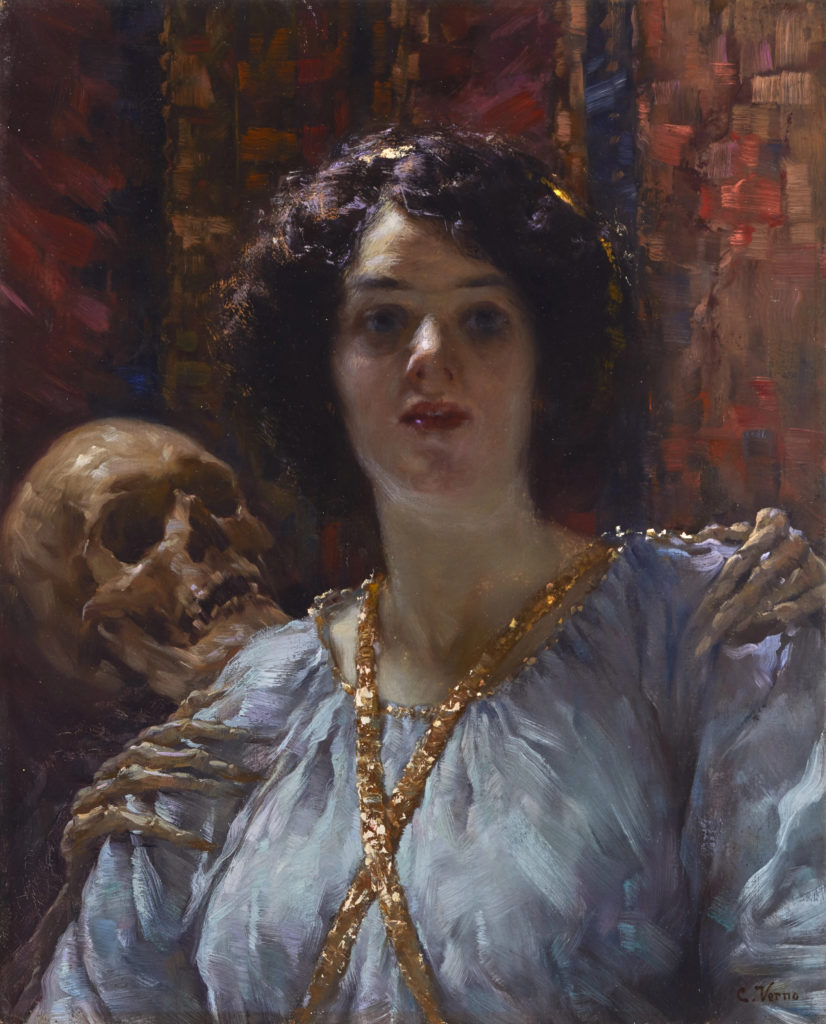
Camillo Verno, Death and the Maiden (circa 1900). Courtesy of Jack Kilgore.
“Did you see this one, my Halloween picture?” Jack Kilgore asked a visitor to his booth, referring to a foreboding canvas of a skeleton leering behind a beautiful young woman, serving as an eerie reminder of mankind’s mortality. “I used to deal in Dutch and Flemish 16th and 17th century paintings, and this motif, death and the maiden, goes back to antiquity.” The work of northern Italian artist Camillo Verno, the oil painting likely depicts the artist’s wife.
—Sarah Cascone
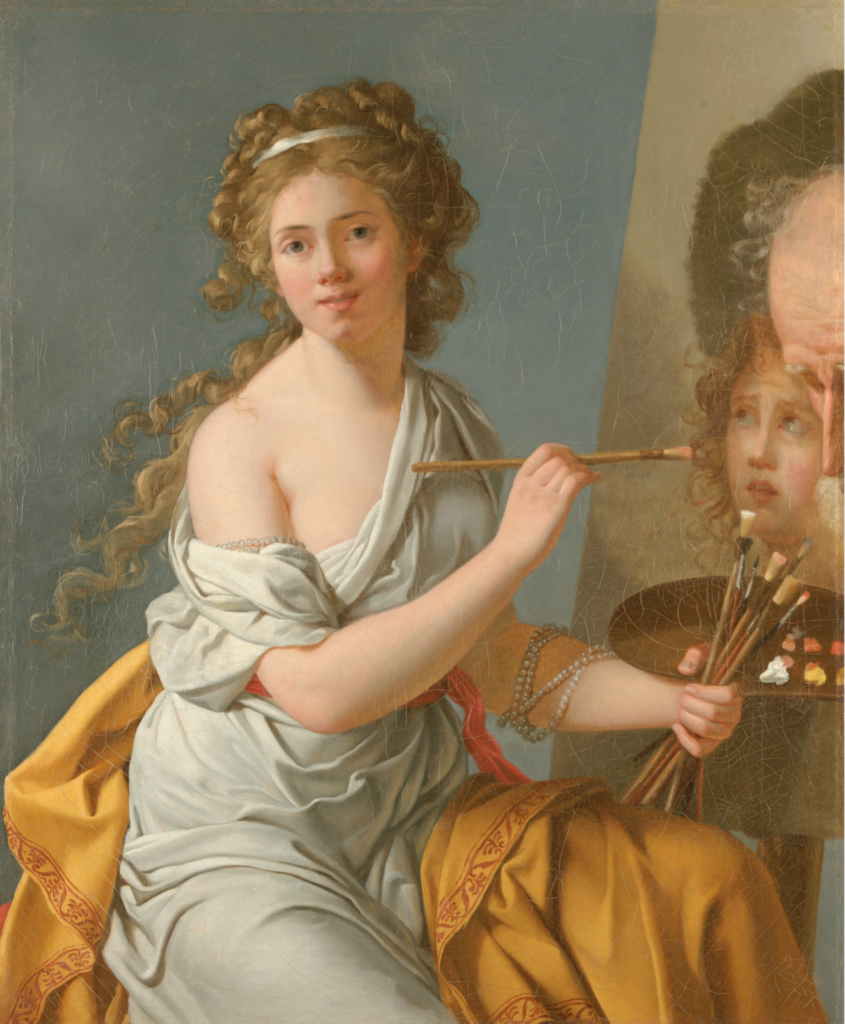
Marie Guillelmine La Ville Le Roulx, Self Portrait (1786). Courtesy of Wildenstein & Co. Inc., New York.
The daughter of a French civil servant, Marie Guillelmine La Ville Le Roulx trained first under Élisabeth Vigée Le Brun and then Jacques-Louis David, and is depicted here as a girl of just 18, copying one of David’s unfinished paintings. Her best-known work, Portrait d’une négresse (Portrait of Madeleine), is in the collection of the Louvre, where it was misattributed to David for many years. “It’s the most beautiful portrait of a black woman in the world,” said Joseph Baillot, the galley’s senior vice president. “We sold it as a David, but it was never by David—it was always by her.” This self-portrait, a rare example of her work, has stayed in her family for generations. “We’ve had a lot of institutional interest on it,” added Vanessa Wildenstein, a fifth-generation staffer of the family-run gallery.
—Sarah Cascone
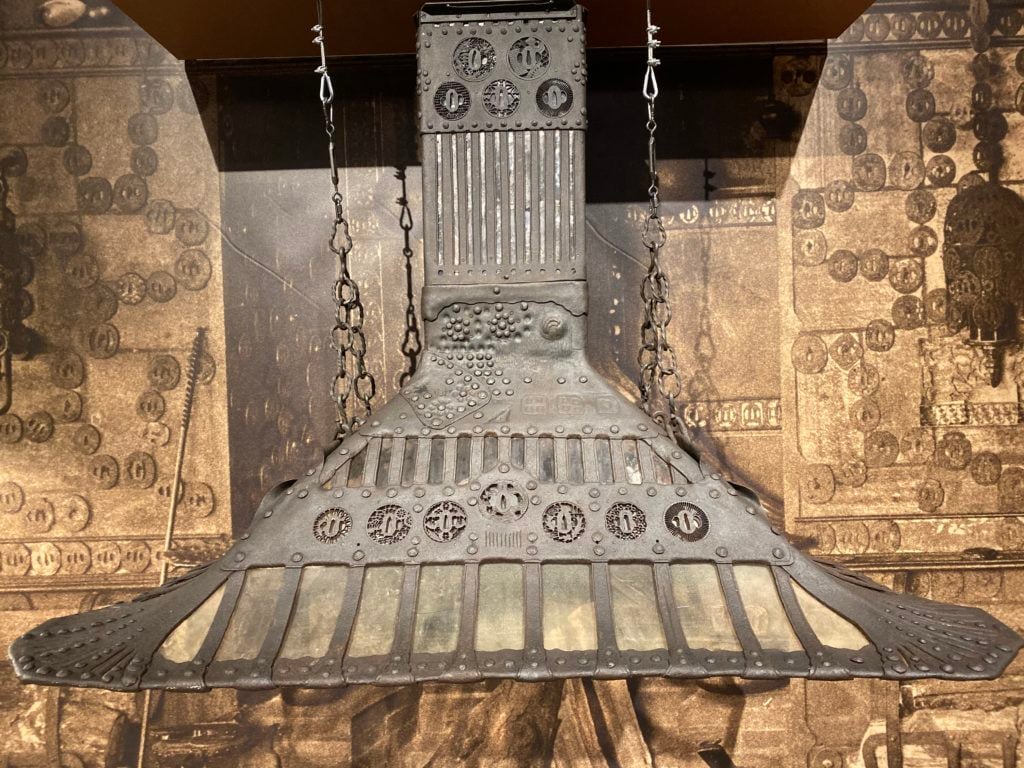
Louis Comfort Tiffany, Fireplace Hood (circa 1882–85) Photo by Sarah Cascone.
Louis Comfort Tiffany designed this one-of-a-kind wrought iron fireplace hood for his Stanford White-designed mansion on East 72nd Street, just a stone’s throw from TEFAF’s Park Avenue Armory home. Later, he brought the hood to Laurelton Hall, his Long Island estate, which burned to the ground in 1957. The fireplace hood was among the artifacts salvaged from the ashes. The great designer inlaid the metal with antique Japanese tsube, which were used by the Samurai as sword guards. “In 1878, the samurai had to turn in their swords and their shields and their armor and tsube came on the market in the United States,” said gallery owner Arlie Sulka. “Louis Comfort Tiffany had a very large tsube collection. According to one of the women who worked in the enameling department, he would carry one of them in his breast pocket to show his artisans what kind of patina he wanted on his metalwork.”
—Sarah Cascone
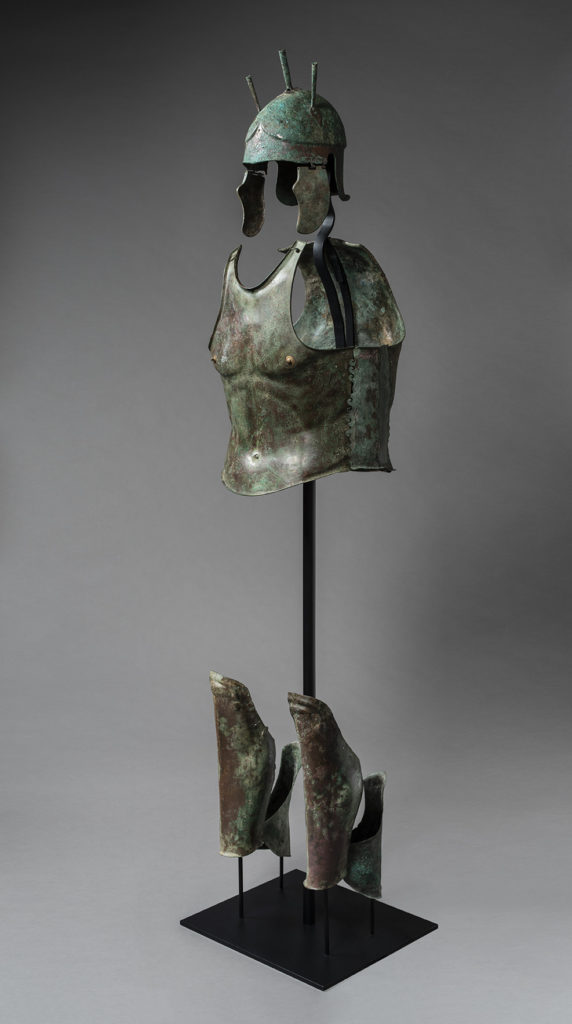
Greek bronze panolply of a cavalryman (Circa 4th Century BC). Image courtesy of Kallos Gallery, London.
This rare panoply of a warrior of the Classical period is one of the most complete to appear on the market in several decades. Similar examples are already housed in permanent museum collections. Gallery director Madeleine Perridge told Artnet News that while it’s not unusual to see detailed depictions of these warriors on classical Greek vases, it is far rarer to see actual complete displays of armor together as in this display.
—Eileen Kinsella
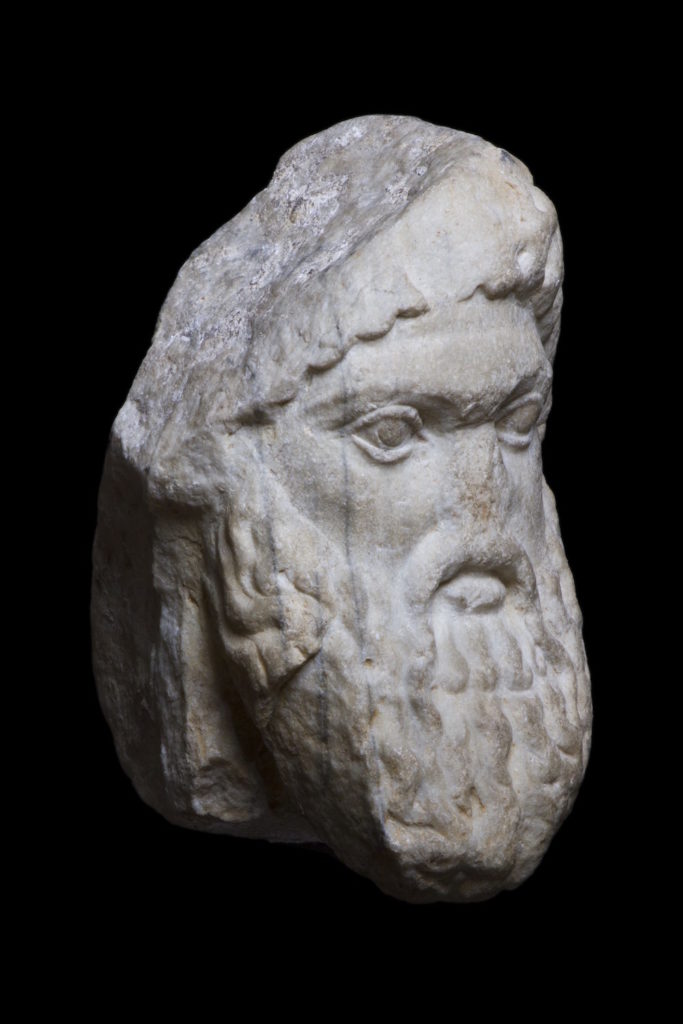
Archaistic Hermes Head (Hellenistic 1st century BC—1st century AD). Image courtesy of Galerie Chanel, Paris
As if you needed any more evidence that today’s savviest collectors are mashing up the old with the new, this ancient bust of Hermes was formerly owned by Pop art icon Andy Warhol. Following the artist’s sudden death in 1987 after gall bladder surgery, the bust was sold at Sotheby’s New York to a Palm Beach collector. Now it can be yours for $95,000.
—Eileen Kinsella
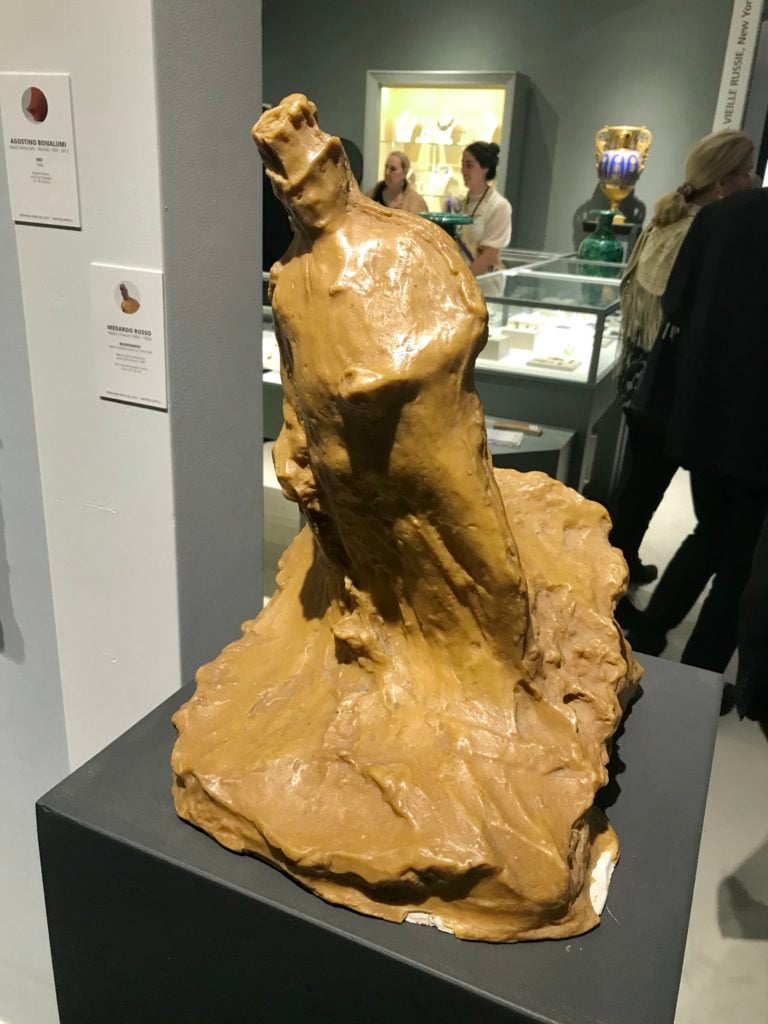
Medardo Rosso, Bookmaker (cast circa 1929–59). Photo by Tim Schneider
This posthumous wax-over-plaster cast, made decades after Italian sculptor Medardo Rosso forged the bronze original between 1893 and 1895, still shows why Bookmaker is one of the artist’s most famous works. Roughly modeled as if it were “meant to be melting into [the] space” around it, according to Tommaso Carletti of Bottegantica, the cast hits like a rubber mallet amid the meticulous craftsmanship and ostentatious beauty of so many other offerings at TEFAF. Rosso’s slanted, drunken bookie didn’t just capture the volatility of turn-of-the-century Parisian street culture, either; some critics have also alleged it became the uncredited inspiration for his contemporary Auguste Rodin’s Monument to Balzac (1898), sometimes defined as the first modernist sculpture—and believed to be the end of Rosso and Rodin’s friendship.
—Tim Schneider

Willem Kalf Still Life With a Chafing Dish and Pilgrims Canteens (1644). Image courtesy of French & Company, New York
Although Willem Kalf is hardly a household name, scholars versed in the Dutch Golden Age have been known to call him “the Rembrandt of still lifes,” according to French & Company president Henry Zimet. This virtuosic, almost Photorealist canvas captures why—and carries the added benefit of having been held in the same private collection for over half a century. A mesmerizing combination of glimmering light and reflections dance across the assorted treasures scattered over the table, from a UFO-like chafing dish illuminated by flames to an astonishingly detailed silver-gilt ewer. No wonder, then, that after viewing a similar still life of Kalf’s in 1797, Johann von Goethe wrote, “For me, at least, there is no question but that, should I have the choice of the golden vessels or the picture, I would choose the picture.”
—Tim Schneider
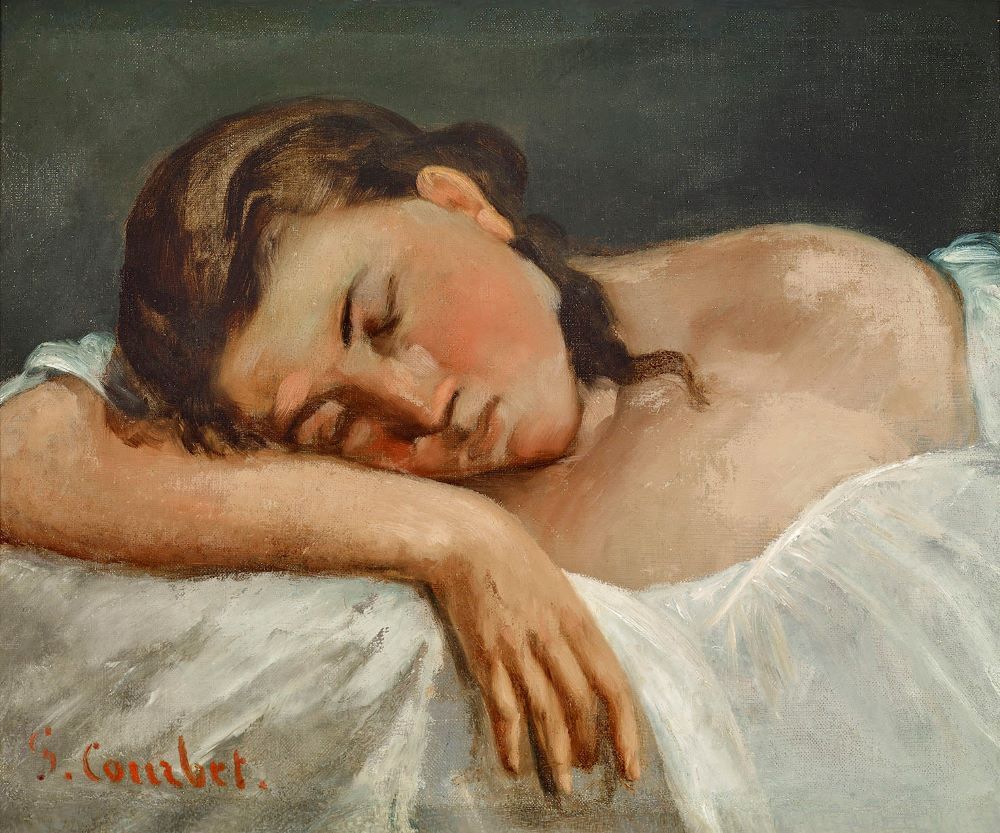 Gustave Courbet, Jeune Fille Dormant (1847). Image courtesy of 19C Gallery, Beverly Hills
Gustave Courbet, Jeune Fille Dormant (1847). Image courtesy of 19C Gallery, Beverly Hills
This is one of Courbet’s earliest depictions of the theme of a woman asleep (which would culminate later in his career in his erotic and sensual painting The Sleepers). Courbet painted this picture when he was just 28 years old and it was exhibited at the Salon of 1848. The young model appears in a dream-like state, her head gently resting on her arm. Her innocence is only matched by her ethereal beauty, yet Courbet has still managed to capture her nascent sensuality, the folds of the white drapery concealing, yet subtly emphasizing, the curves of her body.
—Eileen Kinsella